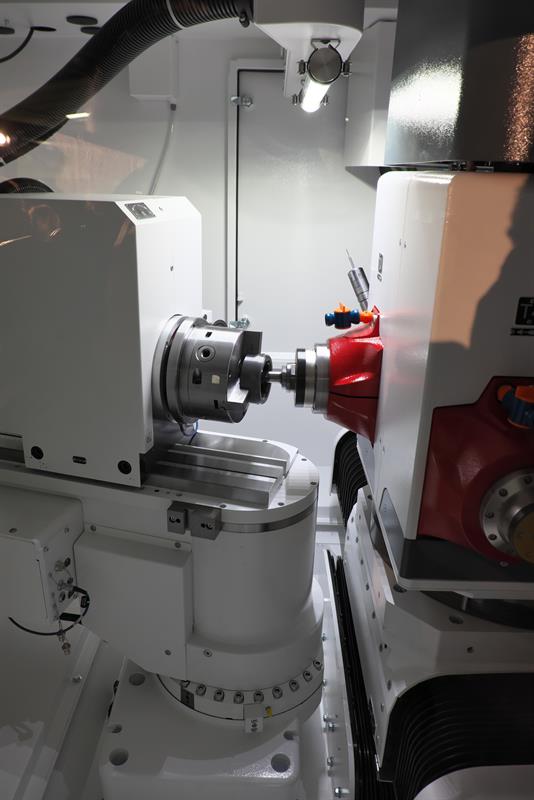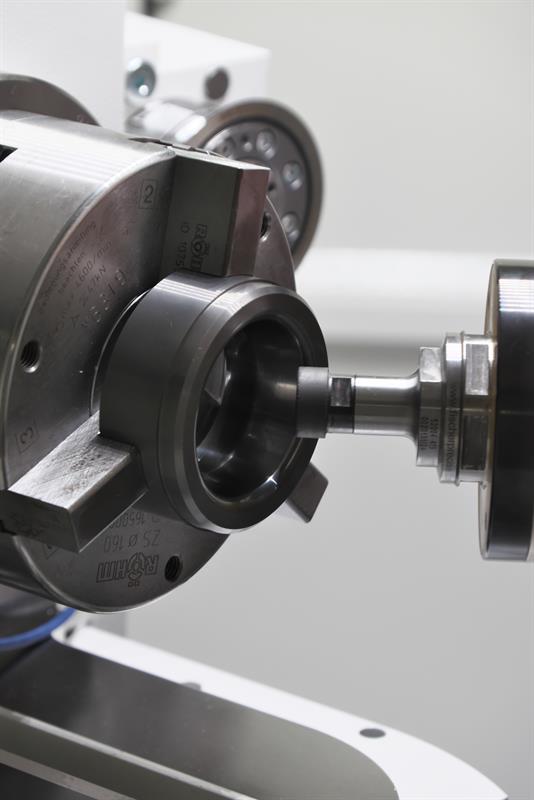“Best in class” is the target for United Grinding Group (the machine tools activity within Korber AG). “Being average is not an option,” said group CEO Michael Horn at the recent Fritz Studer Motion Meeting event in Thun, Switzerland. Universal cylindrical grinding specialist Studer is one of eight grinding machine brands within the United Grinding Group (UGG). These opening comments were linked to the Swiss franc, which was allowed to move with the market in January last year, following withdrawal of support by the Swiss central bank. Prior to that change, a euro was worth Sfr1.2; afterwards it plummeted to below Sfr1, but has since recovered to almost Sfr1.1. Rather wryly, Horn stated that Switzerland didn’t have a franc problem but rather that Europe had euro problem – although a similar change occurred versus the pound sterling, with a fall from 1.55 to 1.30 pounds/franc after the January 2015 announcement.
Against this background, the company has adopted a “no loss of market share” approach for its Switzerland-produced machines, he added, while on the cost side, gains have been made in partnership with suppliers, as well as through the purchase of parts from foreign firms and also through its major in-house initiative of flow-line assembly for all machines (see ‘Flowline assembly’, below), the latter part of its continuous improvement activity, PuLs (Präzision und Leidenshaft – precision and passion – see ‘Precision and passion’ box, below). Future investment will support further efficiency gains, specifically the installation next year of four Makino machining centres for core machine frame component manufacture, with these replacing existing machines.
And while Studer did not meet its sales targets by value for 2014, it did sell more machines, meeting the strategic market share aim, Horn underscored. In fact, limited edition Studer Helvetia S21/S31/S41 models were sold into nine European countries. In contrast, sister brands Schaudt (cylindrical and non-circular grinding between centres) and centreless expert Mikrosa (base machines for both assembled in Thun but finished in Leipzig) beat 2014 figures in both unit number and value. Both benefited from strong automotive demand from Germany and China (over 60% by order value comes from those two countries). Sales were 55% above the value of 2014, in fact.
Returning to the opening statement, though, and technology leadership in cylindrical grinding across the Studer, Schaudt and Mikrosa brands is already claimed and the company is now driving forward on its internal grinding range, assembled in Biel, with more models revealed at this event. Here the company has seen massive increases in sales – 40% growth for 2015 versus the previous year, Jens Bleher, CEO cylindrical grinding, revealed. (As a reminder, Studer acquired Biel-based internal grinding specialist Combitec in 2008 – it is now called also called Studer, but remans in Biel.)

Three new radius grinding machines replace the previous two-model CT range
Additions to the internal grinding range were the main event for the early February meeting, with new internal radius grinding models revealed. These follow a line of recent product unveilings, starting with the launch of the 1,300 mm part length S141 universal machine in May 2014, then more S141 models and the S151 series in autumn 2014; the S131 universal machine and the S122 production machine followed in spring 2015 and, most recently, the S121 universal machine arrived in autumn 2015 (see www.machinery.co.uk/108690). Studer is now completing this platform with three new cylindrical internal radius grinding machines to replace the CT700 and CT900 models – the S121, S131 and S141 internal radius grinding models.
The S121 radius grinding machine replaces the existing CT750, while the S131 has been designed for the previous component range tackled by the CT960.
The S141 radius grinding machine covers a new, larger component area, where there is a small, single-figure annual demand. Key swing over bed statistics for these new machines are: 250 mm for the smallest; 300 mm for the S131; and 400 mm for the S141. External diameters up to 160 mm can now be machined with a 250 mm external grinding wheel, while maximum grinding length, including clamping device, is 300 mm for all three radius grinding machines, with a maximum component weight, including clamping device, of 100 kg.
All the new machines benefit from the incorporation of Studer technology.
So, Granitan machine beds that offer higher damping levels, thermal stability and guidance accuracy; the incorporation the StuderGuide guideway and drive system with linear motors that features high wear resistance, a long working life and better dynamic performance; a new dressing concept that is simpler and offers greater thermal stability and mechanical rigidity; modular design that gives construction and part similarity with other Studer models, meaning non-variable parts in maintenance and service, plus a consequently higher availability of service technicians; and a new design and improved ergonomics additionally increase the machine’s value.

Radius machines tackle such parts as dies, producing high accuracy features
The new models were to be quoted starting in March with anticipated first delivery being October, while the older CT models are available for order up until the end of June.
FUTURE DIRECTIONS
Turning to future machine developments, and Dr Gereon Heinemann, chief technology officer, Studer, brought up the topic of the smart factory, otherwise known as Industry 4.0. This topic, he underlined, was on the agenda at January’s World Economic Forum held in Davos, Switzerland. Under the umbrella of “intelligent and cognitive production”, he said: “We are working on a new system concept – the fulfilment of Industry 4.0.” No details were given but an image of a machine having various elements was shown, with labels taking in: smart [machine] base; augmented reality touch-screen; brain controller; cloud computing; loader with touch-screen; and mobile device interface. Apps available from a United Grinding Group app store were also indicated as a future development.
Fred Gaegauf, managing director/CEO, Studer, also pointed to the company’s establishment last year of a 3D printing joint venture with university-affiliated Inspire AG. Called IRPD, this operation concentrates on the manufacture of industrial metal or plastic prototypes through to the production of low volume complex workpieces as a service. The production of coolant nozzles via 3D printing is being investigated in pursuit of improved coolant delivery on Studer’s grinding machines – the development of ‘liquid tools’, as it was put. This method of production allows for internal nozzle profiles not otherwise possible and which can deliver high velocity coolant via “aerodynamic flow”, Machinery was told.
Through consistent, regular steps, Studer again demonstrates that it is able to offer leading technology globally at an aceptable price from high-cost Switzerland. (Studer has a number of UK agents, see http://is.gd/cUOSg4).
BOX ITEM 1
Flowline assembly
It has taken some 3 ½ years to achieve the flowline (pictured at top of article) that has been operating since 15 October of last year. The process sees a U-shaped path of some 192 m travelled at a pace of 22.9 mm/min by pallets running on a guide system. Machines are assembled and tested in 16 four-hour TAKT processes, meaning that lead time for an assembly is eight working days. Four people tackle each four-hour stage.
A claimed world first is the final testing of a machine while it is on the move. Laser measurement and test grinding are undertaken on a high precision conveyor system 40 m in length that is, in principle, a large, high precision machine tool table and guide system (this is not part of the main flow-line).
BOX ITEM 2Precision and passion
PuLs is a continuous production improvement exercise of a number of years standing at Studer’s Thun facility, and is also implemented at other United Grinding Group facilities. Tool grinding specialist Walter claims 92 people trained, with Studer falling in behind with just two fewer. Across all UGG activities, there are 365 trained individuals, with this number taking in: three ‘executive belts’; 10 ‘silver belts’; 11 ‘black belts’; and 69 ‘green belts’. Training continues.










